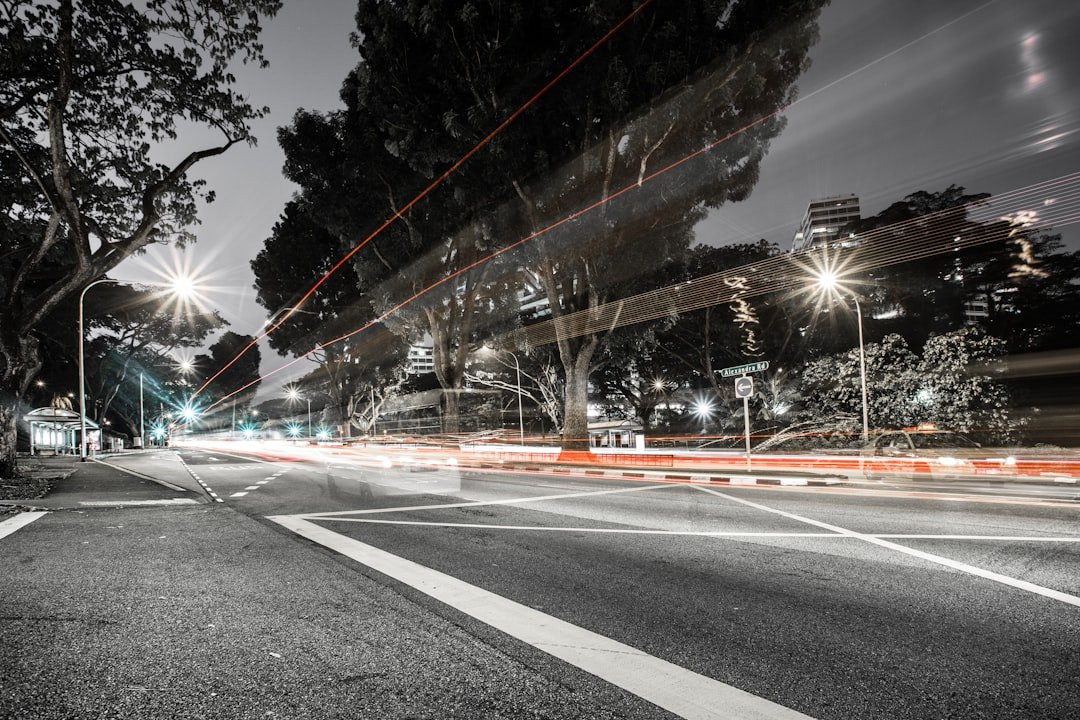At-fault areas refer to regions or jurisdictions where the determination of fault in a vehicular accident is critical for resolving liability issues. In many places, including Cabo Mexico, the concept of fault plays a significant role in how accidents are handled legally and financially. The at-fault driver is typically held responsible for damages incurred by the other party, which can include vehicle repairs, medical expenses, and other related costs.
Understanding the nuances of at-fault areas is essential for drivers, especially those unfamiliar with local laws and regulations. In Cabo Mexico, the legal framework surrounding at-fault determinations is influenced by both national and local laws. The Mexican legal system operates on a civil law basis, which means that statutes and codes are the primary sources of law, rather than case law as seen in common law jurisdictions.
This distinction is crucial for understanding how fault is assessed in accidents. Drivers must be aware that the determination of fault can significantly impact their financial responsibilities and insurance claims, making it imperative to grasp the local legal landscape.
Key Takeaways
- Understanding At-Fault Areas:
- At-fault areas in Cabo Mexico refer to the specific locations or circumstances where an accident occurs and fault is determined.
- Regulations for Determining Accident Responsibility in Cabo Mexico:
- In Cabo Mexico, accident responsibility is determined based on the rules and regulations set forth by the local authorities and legal system.
- Factors Considered in Determining Fault:
- Factors such as traffic laws, road conditions, and driver behavior are considered when determining fault in an accident in Cabo Mexico.
- Legal Consequences of At-Fault Determinations:
- Being found at fault in an accident in Cabo Mexico can result in legal consequences such as fines, penalties, and potential civil liability.
- Insurance Implications in At-Fault Areas:
- At-fault determinations can impact insurance coverage and premiums for drivers in Cabo Mexico.
- Steps to Take After an Accident in Cabo Mexico:
- After an accident in Cabo Mexico, it is important to exchange information, document the scene, and report the incident to the authorities.
- Seeking Legal Assistance in At-Fault Areas:
- In at-fault areas, seeking legal assistance can help navigate the legal process and protect one’s rights in the event of an accident.
- Tips for Safe Driving in Cabo Mexico:
- Safe driving practices such as obeying traffic laws, staying alert, and being mindful of road conditions can help prevent accidents in Cabo Mexico.
Regulations for Determining Accident Responsibility in Cabo Mexico
Assessing Liability
The law is clear: drivers must follow specific traffic rules, and failure to do so can lead to a presumption of fault. For example, if a driver runs a red light or fails to yield to pedestrians, they may automatically be deemed at fault for any resulting collision.
Investigating Accidents
Following an accident, local authorities conduct investigations to determine the circumstances surrounding the incident. This may involve gathering witness statements, examining physical evidence from the scene, and reviewing traffic camera footage if available.
Determining Fault
The findings from these investigations play a crucial role in determining who is liable for damages. It is essential for drivers to understand that even minor infractions can influence the outcome of fault determinations, emphasizing the need for strict adherence to traffic laws.
Factors Considered in Determining Fault

Several factors are taken into account when determining fault in an accident in Cabo Mexico. One of the primary considerations is the actions of each driver leading up to the incident. This includes evaluating whether either party was engaging in reckless or negligent behavior, such as speeding, driving under the influence, or distracted driving.
The presence of any traffic violations can heavily influence the determination of fault, as these violations often indicate a breach of duty owed to other road users. Another critical factor is the physical evidence collected from the accident scene. This may include skid marks, vehicle damage patterns, and debris locations.
For example, if one vehicle has significant front-end damage while another shows damage primarily on the side, this could suggest that the first vehicle was traveling at a higher speed or failed to stop in time. Additionally, witness testimonies can provide valuable insights into the events leading up to the accident, further aiding investigators in establishing fault.
Legal Consequences of At-Fault Determinations
The legal consequences of being determined at fault in an accident can be significant in Cabo Mexico.
This compensation can cover a wide range of expenses, including medical bills, property damage, lost wages, and even pain and suffering.
The financial implications can be substantial, particularly if injuries are severe or if there is extensive damage to vehicles involved. Furthermore, being deemed at fault can also lead to legal repercussions beyond financial liability. In some cases, drivers may face criminal charges if their actions are deemed reckless or negligent enough to warrant such measures.
For instance, driving under the influence of alcohol or drugs can result in serious legal consequences, including fines, license suspension, or even imprisonment. Therefore, understanding the potential legal ramifications of being found at fault is crucial for drivers navigating the roads in Cabo Mexico.
Insurance Implications in At-Fault Areas
Insurance implications are a significant aspect of at-fault areas in Cabo Mexico. When an accident occurs and fault is established, it directly affects how insurance claims are processed. If a driver is found at fault, their insurance company may be responsible for covering the damages incurred by the other party.
This can lead to increased premiums for the at-fault driver upon renewal of their policy due to the perceived higher risk associated with their driving record. Conversely, if a driver is not found at fault, their insurance may cover their own damages while seeking reimbursement from the at-fault party’s insurance company through a process known as subrogation. This can be particularly beneficial for drivers who have comprehensive coverage as it allows them to recover costs without facing immediate financial burdens.
However, navigating insurance claims can be complex and often requires thorough documentation and communication with insurance adjusters.
Steps to Take After an Accident in Cabo Mexico

After an accident occurs in Cabo Mexico, it is essential to follow specific steps to ensure that all necessary information is collected and that legal rights are protected. The first step is to ensure safety; if possible, move vehicles out of traffic to prevent further accidents. Next, it is crucial to call local authorities to report the incident and request assistance.
Law enforcement will document the scene and create an official report that may be vital for insurance claims and legal proceedings. Once safety has been addressed and authorities have been notified, drivers should exchange information with the other parties involved in the accident.
Additionally, taking photographs of the scene can provide valuable evidence later on. Documenting any visible injuries and gathering witness statements can also be beneficial when determining fault and pursuing claims.
Seeking Legal Assistance in At-Fault Areas
In situations where fault is disputed or where significant damages or injuries have occurred, seeking legal assistance becomes paramount. An attorney specializing in traffic accidents can provide invaluable guidance through the complexities of local laws and regulations. They can help navigate negotiations with insurance companies and represent clients in court if necessary.
Legal professionals understand how to build a strong case by gathering evidence and presenting it effectively. Moreover, having legal representation can alleviate some of the stress associated with dealing with an accident’s aftermath. An attorney can handle communications with other parties involved and ensure that all deadlines for filing claims or lawsuits are met.
This support is particularly important in at-fault areas where liability issues can become contentious and complicated.
Tips for Safe Driving in Cabo Mexico
Driving safely in Cabo Mexico requires awareness of local traffic laws and conditions unique to the region. One essential tip is to familiarize oneself with road signs and signals specific to Mexico; many signs may differ from those found in other countries. Additionally, understanding that speed limits may not always be strictly enforced encourages drivers to remain vigilant about their speed and driving behavior.
Another critical aspect of safe driving is being aware of local driving customs. For instance, aggressive driving behaviors such as tailgating or frequent lane changes are more common in some areas. Defensive driving techniques—such as maintaining a safe following distance and being prepared for sudden stops—can help mitigate risks associated with these behaviors.
Furthermore, avoiding distractions such as mobile devices while driving is crucial for maintaining focus on the road. In summary, understanding at-fault areas involves recognizing how liability is determined following vehicular accidents and what implications arise from these determinations. In Cabo Mexico specifically, regulations dictate how responsibility is assessed based on various factors including driver behavior and physical evidence from accidents.
Legal consequences can be severe for those found at fault, impacting both finances and personal freedom. Insurance implications further complicate matters as they directly relate to how claims are processed based on fault determinations. After an accident occurs, knowing what steps to take—such as ensuring safety, contacting authorities, and gathering information—is vital for protecting one’s rights and interests.
Seeking legal assistance can provide additional support when navigating complex situations involving disputed fault or significant damages. Finally, practicing safe driving habits tailored to local conditions can help prevent accidents altogether, ensuring a safer experience on Cabo’s roads for everyone involved.
If you are interested in learning more about the beautiful destination of Cabo, Mexico, you may want to check out the article “Hello World!” on Cabo Adventures’ website. This article provides a general overview of what Cabo has to offer in terms of activities, attractions, and natural beauty. It can give you a better understanding of the area where accidents may occur and the regulations for determining accident responsibility, as discussed in the article “Is Cabo Mexico an At-Fault Area.”
FAQs
What are the regulations for determining accident responsibility in Cabo, Mexico?
In Cabo, Mexico, the regulations for determining accident responsibility are based on the principles of fault and negligence. The responsible party for an accident is typically determined by assessing who was at fault or negligent in causing the accident.
How is fault determined in Cabo, Mexico?
Fault in Cabo, Mexico is determined based on the actions and behaviors of the parties involved in the accident. Factors such as traffic laws, right of way, and other relevant regulations are considered in determining fault.
Are there specific laws or regulations that govern fault determination in Cabo, Mexico?
Yes, Cabo, Mexico follows the legal principles of fault and negligence in determining accident responsibility. These principles are outlined in the country’s civil code and traffic laws.
What steps should be taken after an accident in Cabo, Mexico to determine fault?
After an accident in Cabo, Mexico, it is important to gather evidence such as witness statements, photographs, and police reports to help determine fault. It is also advisable to seek legal advice to understand the specific regulations and procedures for determining fault in Cabo, Mexico.



